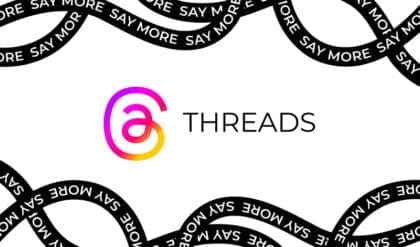Introduction
In the kaleidoscope of the digital world, influencers are the vibrant hues that draw the eye. But what exactly defines an influencer? At its core, an influencer is someone who has the power to affect the decisions of others because of their authority, knowledge, position, or relationship with their audience.
What started as a term associated with prominent figures in media and entertainment has now blossomed into a rich tapestry of individuals. Who command dedicated followings across social media platforms. From the early days of celebrity endorsements to the modern phenomenon of social media mavens, the concept of influence has undergone a profound evolution.
This journey from red carpets to the palm-held screens of smartphones marks a significant shift in how we perceive and engage with those who inspire and persuade us.
The digital age hasn’t just changed who we view as influencers. It’s revolutionized how they interact with us. No longer confined to the passive consumption of mass media. Today’s influencers are part of a dynamic, two-way street of interaction. So they don’t just set trends. They also engage in real-time conversations, create communities around shared interests, and forge a new kind of connection that’s as personal as it is powerful.
In this article, we’ll embark on a journey to explore the multifaceted world of influencers. From the various types that pepper the digital landscape to the profound impact they wield on consumer behavior. We’re delving deep into the essence of what makes an influencer in today’s hyper-connected world.
The Evolution of Influence
The metamorphosis of influence is a narrative of adaptation and change, mirroring the relentless evolution of media itself. The journey from the silver screens of Hollywood to the glossy displays of smartphones encapsulates more than a shift in platforms. It signifies a transformation in how we perceive and interact with those we admire and follow.
In the golden age of cinema and television, influencers were larger-than-life figures. Movie stars, sports heroes, and television personalities dominated the landscape. And their images are meticulously crafted by studios and publicists. Their influence was undeniable, yet it was a distant star in the consumer’s universe—admirable, aspirational, but often unattainable.
The advent of the internet, and subsequently social media, initiated a seismic shift in this dynamic. Platforms like Instagram, YouTube, and TikTok didn’t just offer new mediums for sharing content. They also dismantled the barriers between the influencer and the audience. Influence became democratized. Now, anyone with a compelling story, a unique talent, or a relatable personality could amass a following. These new-age influencers are more than just trendsetters or brand ambassadors. And they are creators, storytellers, and community builders.
Unlike their predecessors, these modern influencers don’t just broadcast to an audience; they engage with them. They foster communities around shared passions, whether that’s fashion, gaming, fitness, or anything in between. Their power lies not just in their numbers, but in their ability to create a genuine connection with their followers—a connection that’s interactive, personal, and real.
This evolution has not only changed who we consider influencers but also recalibrated the very essence of influence. It’s no longer about the unattainable aspiration. It’s also about relatable inspiration. In the following sections, we’ll delve deeper into the types of influencers that populate the digital landscape. And also the profound impact they have on shaping opinions, trends, and, ultimately, consumer behavior.
Types of Influencers
In the mosaic of the influencer ecosystem, not all influencers are painted with the same brush. The spectrum ranges from individuals who influence within tight-knit communities to those whose words echo across vast digital landscapes. Here, we categorize influencers into four primary types: Nano, Micro, Macro, and Mega. Each type holds its unique place in the tapestry of influence, wielding distinct powers of persuasion and connection.
- Nano-Influencers (1K-10K followers):
- The grassroots of the influencer world, nano-influencers. They may have a smaller audience, but their influence is mighty. Their hallmark is their authenticity and their intimate, trust-based relationships with their followers.
- They are often perceived not as distant celebrities but as friends or acquaintances, making their recommendations and endorsements highly relatable and impactful.
- Brands often collaborate with nano-influencers to tap into highly engaged and niche audiences, benefiting from the genuine and personal interaction that these influencers foster.
- Micro-Influencers (10K-100K followers):
- With a balance of reach and intimacy, micro-influencers have carved a niche for themselves. They are often subject matter experts or passionate enthusiasts in specific areas, from beauty and fashion to gaming and fitness.
- Their content is typically characterized by a personal touch, engaging storytelling, and a deep understanding of their audience’s preferences and needs.
- Their endorsements are powerful because they are viewed as trusted experts in their niches, making their influence both substantial and meaningful.
- Macro-Influencers (100K-1M followers):
- Bridging the gap between the relatability of micro-influencers and the star power of celebrities, macro-influencers offer a blend of broad reach and targeted influence.
- While they may not have the same level of personal interaction as nano or micro-influencers, their ability to reach a wider audience without losing their niche appeal makes them invaluable for brand campaigns aiming for scale without sacrificing relevance.
- Mega-Influencers (1M+ followers):
- At the pinnacle of the influencer hierarchy are the mega-influencers. These are often celebrities or individuals who have risen to prominence through their sheer magnetism and widespread appeal.
- Their massive reach makes them ideal for campaigns aiming for maximum visibility. However, their level of engagement and personal connection with the audience may not be as deep as those of influencers with smaller followings.
Understanding these categories helps in appreciating the nuances of influencer marketing and the multifaceted nature of influence in the digital age. Each type of influencer brings a unique flavor to the table, catering to different marketing needs and audience interactions.
The Impact of Influencers on Consumer Behavior
Influencers are more than just social media personas; they are pivotal players in the modern consumer’s decision-making journey. The influence they wield is subtle yet profound, shaping perceptions, swaying decisions, and setting trends across various consumer segments. This section delves into the intricate ways influencers impact consumer behavior and the strategies they employ to engage and persuade their audience.
- Creating Trust Through Authentic Engagement:
- The power of influencers lies in the trust they build with their audience. This trust is cultivated through consistent, authentic engagement. Whether it’s through sharing personal stories, offering genuine insights, or engaging in conversations, influencers create a rapport with their followers that traditional advertising struggles to achieve.
- This trust translates into influence when it comes to purchasing decisions. Consumers are more likely to take the recommendation of an influencer they trust over a traditional advertisement.
- Leveraging the Psychology of Social Proof:
- The concept of social proof is pivotal in understanding the influence of influencers. Humans naturally tend to emulate the behaviors, preferences, and decisions of people they admire or relate to. Influencers, by sharing their experiences and endorsements, provide a powerful form of social proof that can significantly sway consumer behavior.
- Whether it’s trying out a new skincare routine, buying the latest gadget, or exploring a travel destination. The actions and approvals of influencers serve as a compelling guide for their audience’s choices.
- Employing Interactive and Personalized Content:
- Influencers often use interactive content strategies like Q&As, polls, and real-time discussions to engage their audience. This interactive approach not only keeps the audience engaged but also makes them feel valued and heard.
- Personalization is another key strategy. By tailoring their content to the interests, preferences, and behaviors of their audience, influencers ensure that their messages resonate on a more personal and impactful level.
- Narrative and Storytelling:
- Good influencers are master storytellers. They weave narratives around products, experiences, and brands in a way that’s engaging and relatable. This storytelling aspect transforms a product from being just an item to a part of the influencer’s (and by extension, the audience’s) lifestyle or story.
- This narrative-driven approach makes the endorsement more than just a promotion. It becomes a shared experience, a part of the consumer’s identity, and a chapter in their own story.
The influence of influencers is a testament to the evolving dynamics of consumer engagement and brand communication. By understanding and leveraging this influence, brands can unlock new avenues for connection, engagement, and influence, ultimately driving consumer behavior in today’s digital-first world.
Conclusion
As we draw the curtains on our exploration of the influencer landscape, it’s clear that the realm of influence in the digital age is rich, diverse, and ever-evolving. Influencers, from nano to mega, have redefined the art of persuasion, turning every post, story, and tweet into potential catalysts for change, preference, and consumption.
The journey from traditional celebrity endorsements to the multifaceted, nuanced world of social media influencers marks a significant shift in how we perceive authority and authenticity. In today’s digital milieu, influencers are more than just marketing tools; they are the embodiment of a cultural shift towards more personalized, relatable, and interactive forms of communication. They don’t just influence our choices; they shape our digital narratives and, in many ways, mirror the evolving dynamics of society itself.
As consumers, understanding the impact of influencers helps us navigate the complex web of digital interactions with more awareness and insight. For brands and marketers, recognizing the nuances of different influencer types and the subtleties of their impact on consumer behavior is crucial for crafting effective, resonant marketing strategies.
In the end, the world of influencers is a testament to the power of connection. Between people, stories, and experiences. It’s a space where influence is not just about reach but about resonance. It’s not just about visibility but about connection and trust. And in this space, every like, share, and follow is part of a larger narrative. One that’s continuously being written in the vast, vibrant expanse of the digital world.







